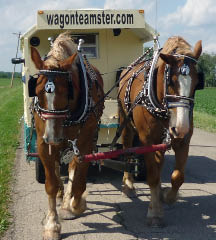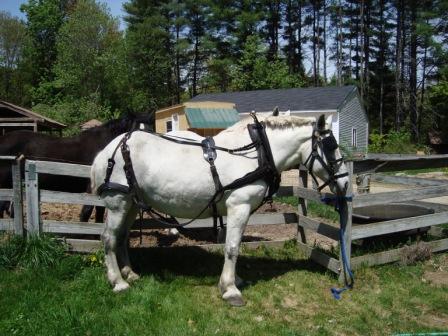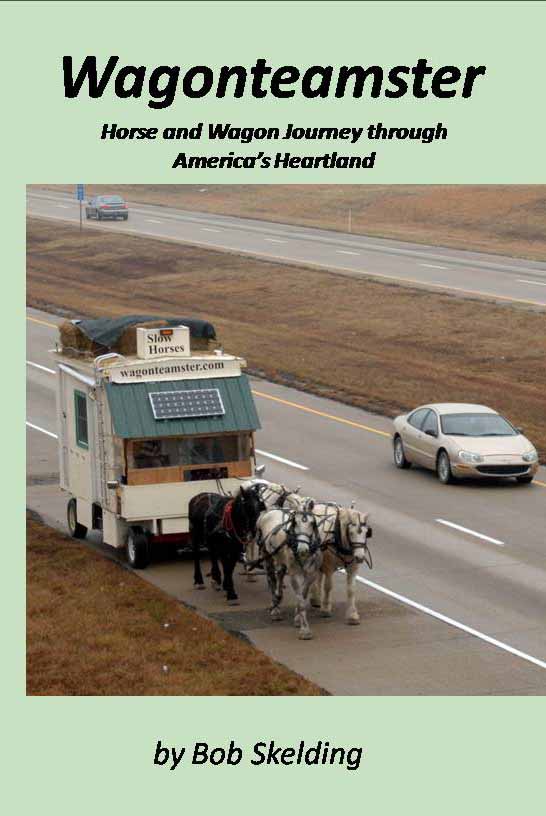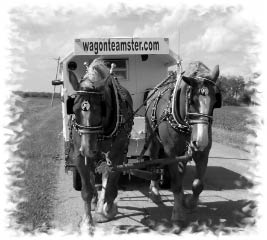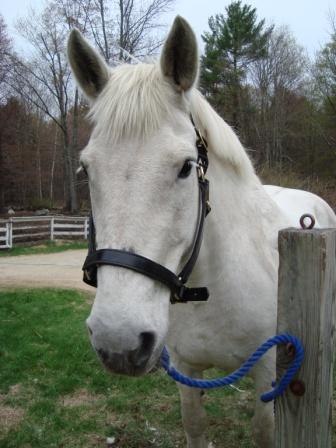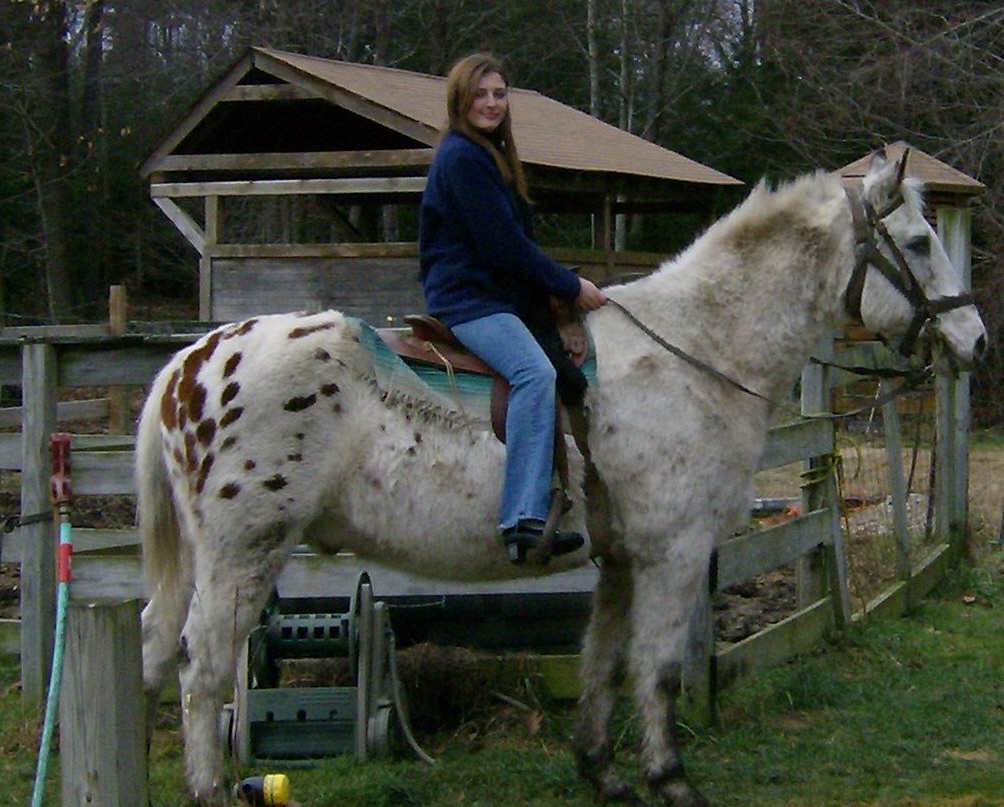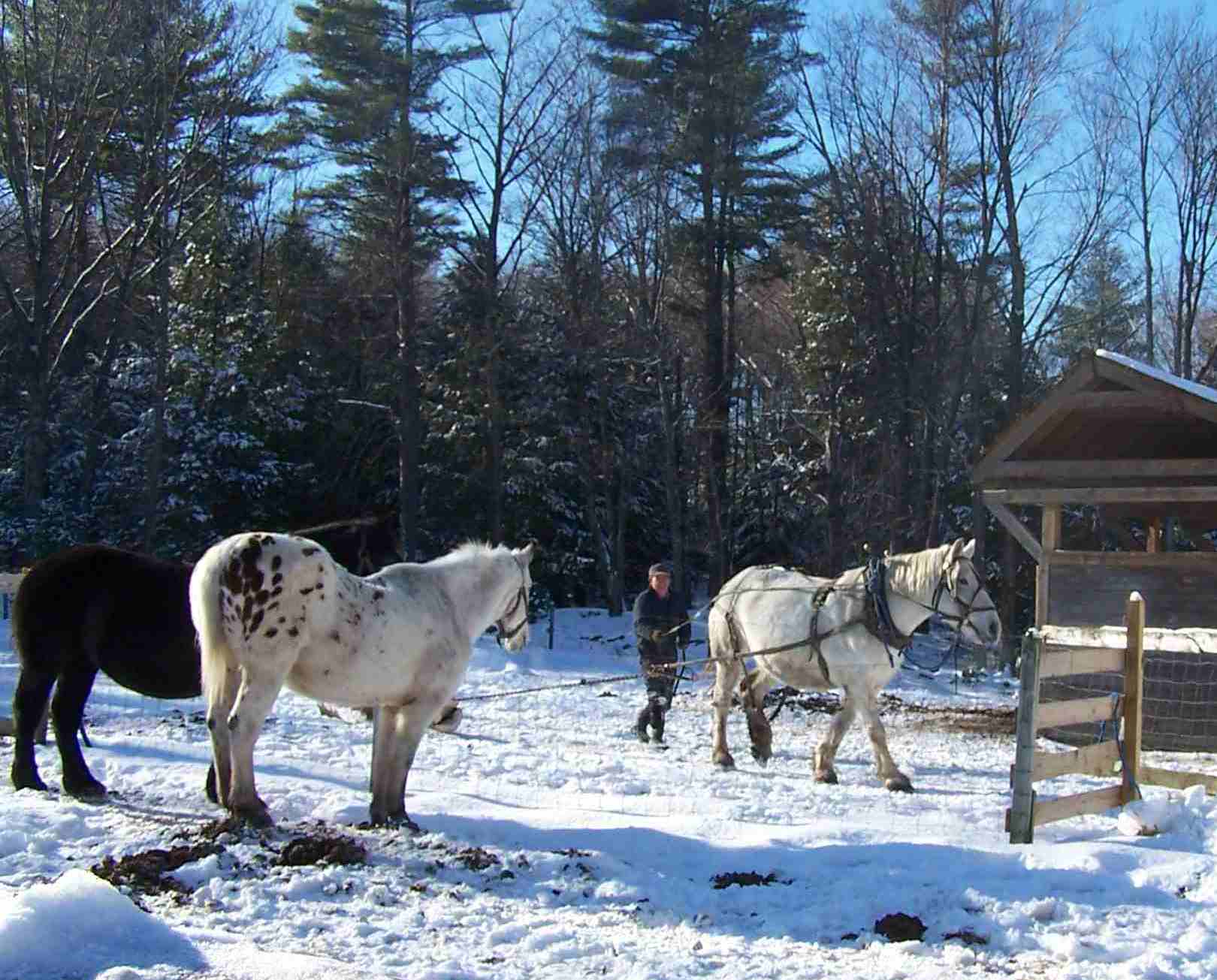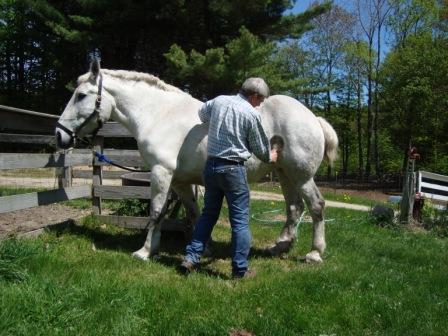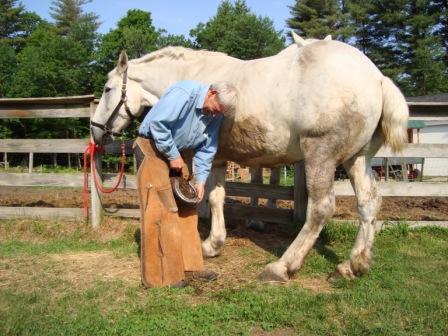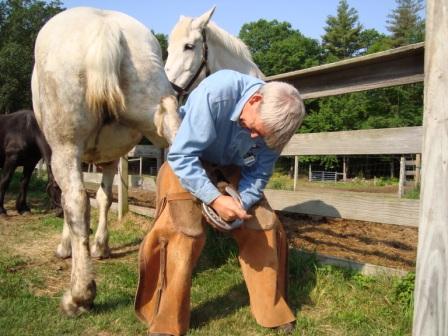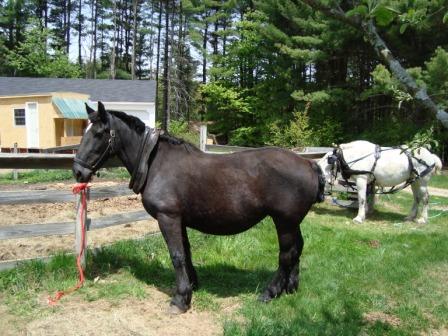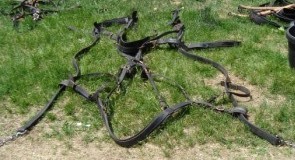|
All four of my horses are Percheron draft horses. Several hundred years ago, Percherons were the favorite horse for French knights to ride in battle. When a knight was all dressed out in armor and had his weapons, he weighed about double his normal weight. For this reason he needed a strong horse to carry him. When the days of the knights were over, Percherons were bred even larger, and used by farmers as strong farm horses.
About 150 years ago, farmers and horse breeders imported these horses to America for farmers here to use. In the 1920ís, the Percheron was the most popular draft horse in the United States. After the tractor started to be used on farms, the number of draft horses fell very rapidly. In the 1950ís and 1960ís very few Percheron breeders were left in the United States. My great grandfather, Lawrence Sheaffer, and my grandfather, Jake Sheaffer, were two of the Percheron breeders still in the business. The bloodlines for my black horse, Joyce go way back in my family. My great grandfather bought an ancestor of Joyce in the year 1920, a registered Percheron mare named Kitt.
|
